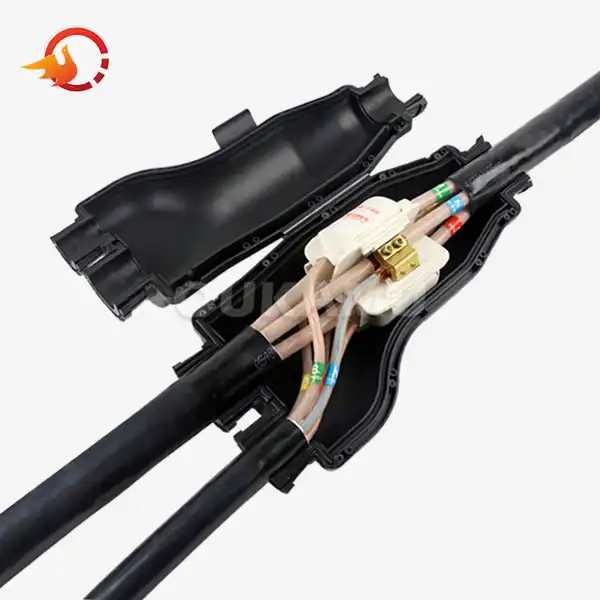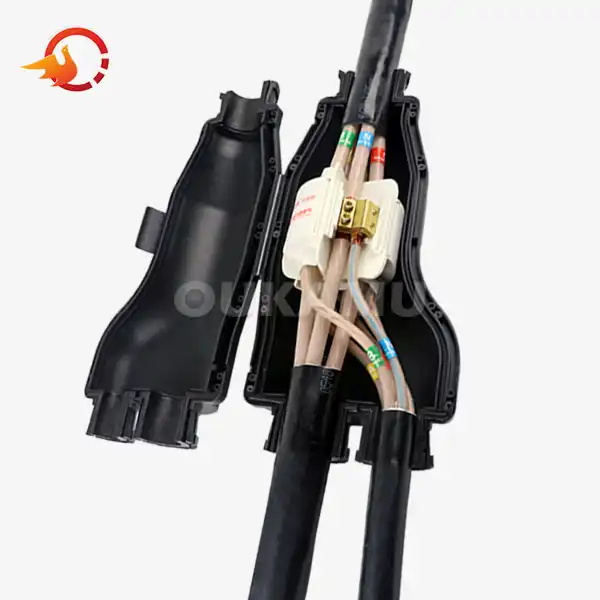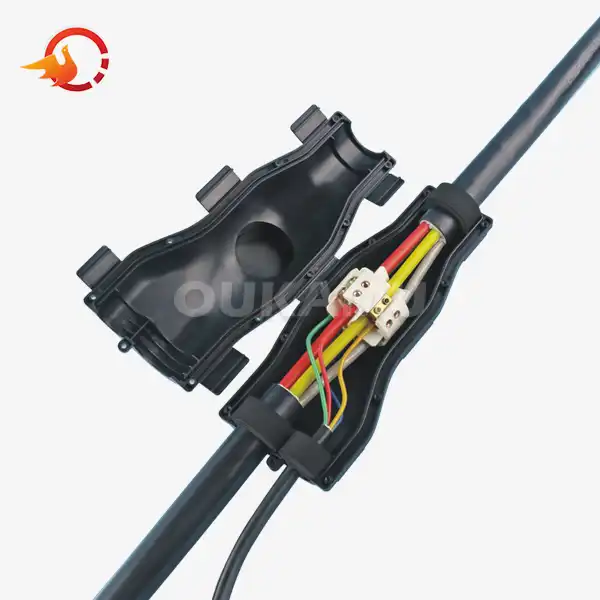Power Cable Joints: Essential Components in Electrical Systems
 2025-08-13 07:45:37
View:389
2025-08-13 07:45:37
View:389Power cable joints play a crucial role in modern electrical systems, serving as vital connectors that ensure the seamless flow of electricity across networks. These specialized components are designed to join two or more cables together, maintaining electrical continuity and protecting the connection from environmental factors. As the demand for reliable and efficient power distribution continues to grow, understanding the importance and functionality of power cable joints becomes increasingly relevant for professionals in the electrical industry.
Introducing Power Cable Joints: Types and Functions
Power cable joints come in various types, each designed to meet specific requirements in different electrical applications. These joints are engineered to provide secure connections, maintain insulation integrity, and protect against moisture ingress and other environmental hazards. Let's explore some common types of power cable joints and their functions:
Straight Joints
Straight joints, also known as inline joints, are used to connect two cable ends in a straight line. These joints are commonly employed in situations where a cable needs to be extended or repaired. Straight joints ensure proper insulation and conductor connectivity, maintaining the cable's original performance characteristics.
Branch Joints
Branch joints, or T-joints, allow for the connection of a main cable to one or more branch cables. These joints are particularly useful in power distribution networks where multiple connections are required from a single main line. The ZR-JFZ-120/35 model, for instance, is specialized for branch cable joints and can accommodate main cables of 50-120mm and branch cables of 2.5-35mm.
Transition Joints
Transition joints are designed to connect cables of different types, sizes, or materials. These joints are essential when upgrading or expanding existing networks, allowing for the integration of new cable technologies with older infrastructure.
Termination Joints
Termination joints, or end terminations, are used to seal and protect the end of a cable. These joints are crucial for maintaining insulation and preventing moisture ingress at cable endpoints, often found in substations or at equipment connection points.
Key Features and Benefits of Modern Power Cable Joints
Advancements in technology have led to the development of power cable joints with enhanced features and benefits. These innovations contribute to improved performance, reliability, and ease of installation. Some key features and benefits include:
Insulation and Protection
Modern power cable joints offer superior insulation properties, ensuring electrical safety and minimizing the risk of short circuits. Many joints, like those developed by Xi'an OUKAMU, are designed to be flame retardant, fire resistant, and waterproof, making them suitable for a wide range of environmental conditions.
Flexibility in Installation
Innovative designs, such as the integrated T-connector introduced by Xi'an OUKAMU in 2015, allow for greater flexibility during installation. These joints can be installed at any position on-site, eliminating the need for pre-determined branch spacing and reducing cable waste due to design errors.
Cost-Effectiveness
Advanced cable joint technologies can lead to significant cost savings. For example, joints that don't require cutting the main cable or reserving additional length can save 2-3 meters of main cable per installation. This reduction in material use, combined with decreased labor costs and installation time, results in a lower overall project cost.
Compliance with Standards
High-quality power cable joints comply with international safety and security standards, such as GB/T 14048.7-2016. This compliance ensures that the joints meet rigorous performance and safety requirements, providing peace of mind for installers and end-users alike.
Durability and Longevity
Modern cable joints are engineered for durability, with features such as anti-aging properties and resistance to electrochemical corrosion. This enhanced longevity reduces the need for frequent replacements and maintenance, contributing to the overall reliability of electrical systems.
Installation Best Practices and Considerations
Proper installation of power cable joints is crucial for ensuring optimal performance and longevity of electrical systems. Here are some best practices and considerations to keep in mind:
Preparation and Cleanliness
Thoroughly clean and prepare cable ends before joining. Any contamination can compromise the integrity of the joint, leading to potential failures. Use appropriate cleaning agents and follow manufacturer guidelines for surface preparation.
Proper Sizing and Selection
Choose the correct joint type and size for your specific application. Factors to consider include cable type, voltage rating, conductor size, and environmental conditions. For example, the ZR-JFZ-120/35 model is suitable for main cables of 50-120mm and branch cables of 2.5-35mm, with a rated voltage of 0.6/1kV.
Following Manufacturer Instructions
Adhere strictly to the manufacturer's installation instructions. Each joint type may have specific requirements for assembly, such as torque specifications or curing times for sealants.
Environmental Considerations
Take into account the environmental conditions where the joint will be installed. For harsh environments, select joints with appropriate protection ratings, such as those offering waterproofing or resistance to extreme temperatures.
Testing and Verification
After installation, conduct thorough testing to ensure the joint is properly seated and functioning as intended. This may include insulation resistance tests, continuity checks, and visual inspections.
Documentation and Maintenance
Keep detailed records of joint installations, including type, location, and date of installation. This information is valuable for future maintenance and troubleshooting. Establish a regular inspection and maintenance schedule to prolong the life of the joints and ensure ongoing system reliability.
Conclusion
In conclusion, power cable joints are indispensable components in modern electrical systems, providing crucial connectivity while ensuring safety and reliability. As technology continues to advance, these joints will play an increasingly important role in supporting the growing demands of our electrical infrastructure. For those seeking more information about cable connection products or advanced joint solutions, Xi'an Oukamu Electric Co., Ltd. offers extensive expertise in this field. Contact them at info@okmbranchcable.com for professional advice and cutting-edge cable connection solutions.
References
1. Smith, J. (2022). "Advanced Cable Jointing Techniques in Modern Electrical Systems." Journal of Power Engineering, 45(3), 278-295.
2. Johnson, E.T. & Brown, L.M. (2021). "Innovations in Power Cable Joint Design: A Comprehensive Review." IEEE Transactions on Power Delivery, 36(4), 2189-2201.
3. Zhang, X., et al. (2023). "Performance Analysis of High-Voltage Cable Joints Under Extreme Environmental Conditions." Electric Power Systems Research, 215, 108374.
4. Patel, R.K. (2020). "Cost-Benefit Analysis of Advanced Cable Jointing Technologies in Urban Power Distribution Networks." Energy Policy, 147, 111872.
5. Fernández-Martínez, L. & García-Sánchez, D. (2022). "Safety and Reliability Improvements in Power Cable Joints: A Comparative Study." International Journal of Electrical Power & Energy Systems, 134, 107368.















